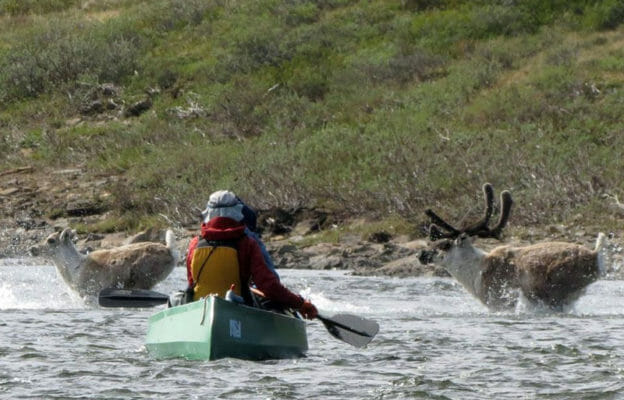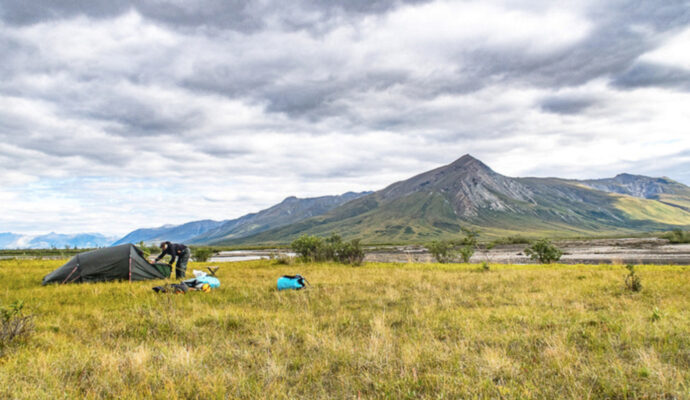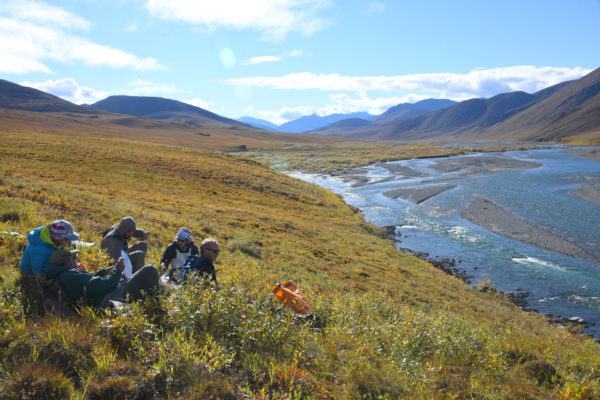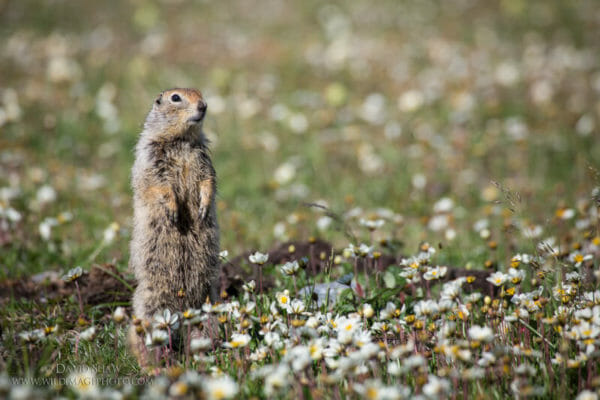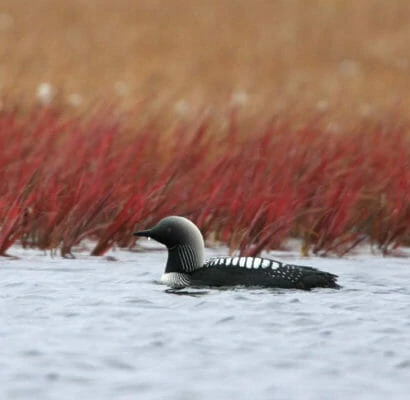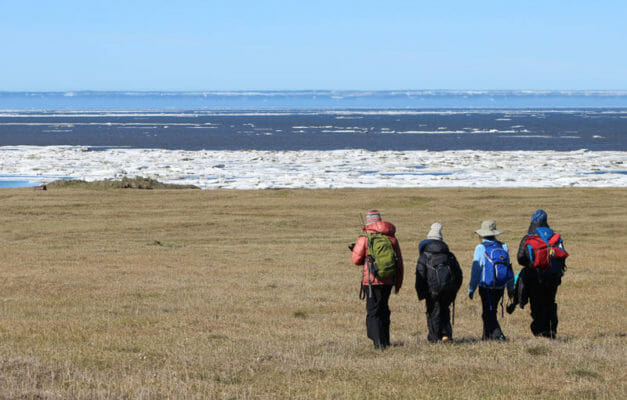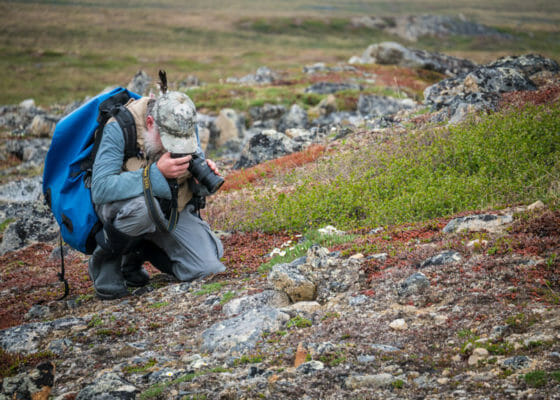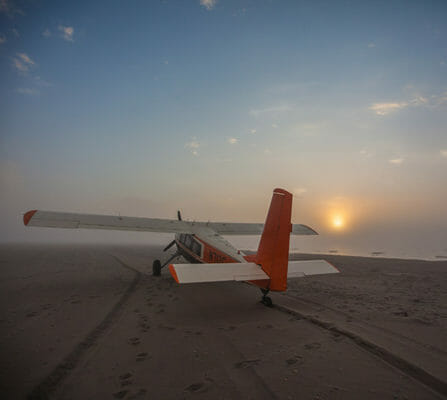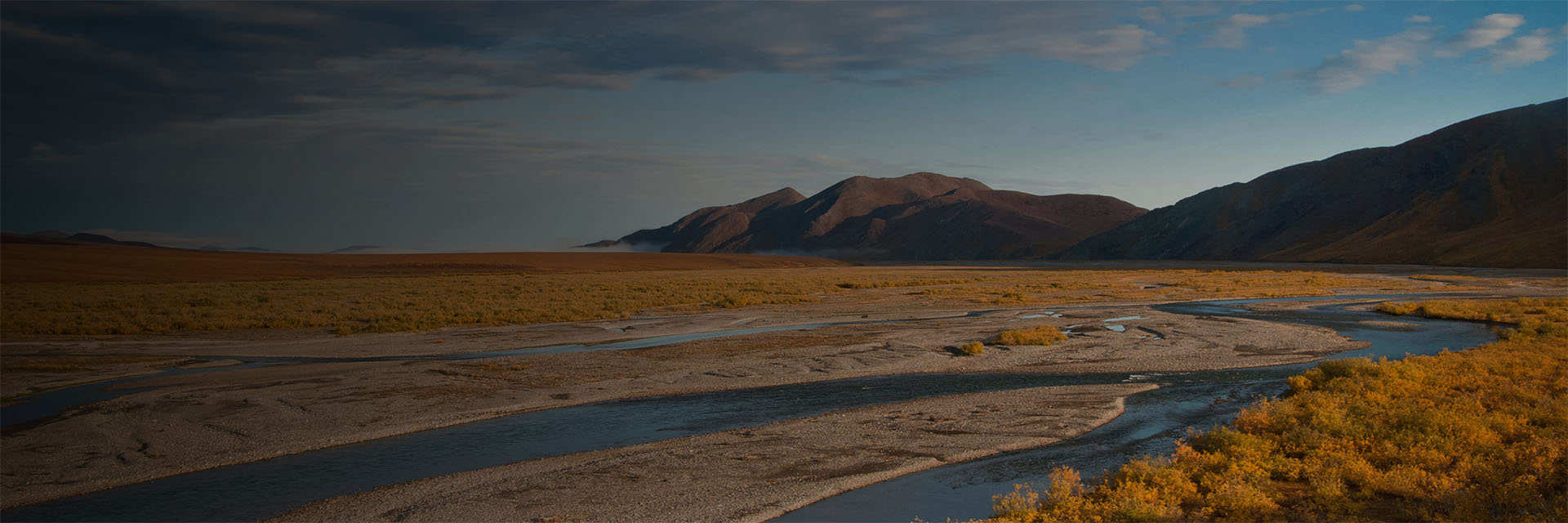Last updated: December 1, 2023
Itinerary
What follows is a general flow of events. Expect the unexpected and prepare to be flexible.
June 15
Meet your guides for a pre-trip meeting at 4pm in Fairbanks at Arctic Wild headquarters. We’ll orient you to the trip logistics, help you check through your gear, and take time to answer everyone’s questions.
June 16
We leave Fairbanks early flying north in stages making our way across the Yukon River and the Brooks Range. Eventually the capable bush pilots will land us at our put-in on the Canning, a long sandbar at river’s edge. Once the entire group has arrived, we can set up camp and explore the nearly limitless wilderness. The sun won’t set so we can explore all night if we wish.
June 17 - 18
The northern edge of the Brooks Range is lovely with raptors dotting the limestone cliffs and the nearly 9,000 ft peaks to the south generating their own weather.
We intend to take a lay-over day while in the mountains to ascend a rocky ridge dotted with wildflowers for views of the impressive Brooks Range looming in the south and the braided channels of Canning disappearing into the curve of the earth to the north.
Before launching on the Canning we will review river safety, assemble the canoes and hone our paddle strokes.
On paddling days we will spend about five or six hours on the water, stopping for short walks and a delicious lunch en route. The river is swift though without named rapids. We will become proficient at keeping the canoes to the deep calm water avoiding the banks, riffles and shallows along the way.
June 19 - 22
Moving downriver snow capped mountains fall behind, replaced by three and four thousand foot mountains on the east of the river and a maw of sky above the coastal plain to the north and west. The river winds towards the mountains and then swings in wide arcs west into the flats. We tend to camp where the river hits the mountains affording us the opportunity for long evening hikes into the higher-country.
In this foothills section several tributaries join the Canning and deep springs bubble gin-clear water into the river. During the winter these fresh water sources quickly turn to ice which freeze layer upon layer into vast fields of aufeis. These arctic ice fields glisten long into the summer and the Canning carves canyons through these icy canyons. Paddling through them is otherworldly.
June 23 - 25
As even the northernmost foothills fade behind our canoes, the horizon curves in an unfamiliar and beautiful arc. The coastal plain seems austere at first, but quickly becomes a cherished landscape full of wildlife and wonder. Evening walks no longer ascend a nearby promontory, but instead aim towards inland lakes hosting swans, loons and an astounding assortment of shorebirds.
The Canning’s delta is unique. The river actually splits into 2 different rivers each with it’s own ocean mouth. Generally we follow the “Staines” branch which in turn splits into several braids before eventually collecting itself back into a single channel near the dunes at the river’s mouth. Caribou frequent the river gravels and braided tundra along the lower Canning. If lucky we could see tens of thousands of animals enjoying the sea breezes.
The coastal plain and especially the river delta is rich in bird life, some of the best in Arctic Alaska. We plan on spending the last full day of the trip near the Arctic Coast. We can hike down to the beach and maybe even swim in the icy ocean before returning to the air-strip a couple miles inland to prepare for the sad but inevitable departure.
June 26
Weather permitting, our pilot will arrive and fly us back across the Brooks Range to Fairbanks in time for a late dinner and a shower.










